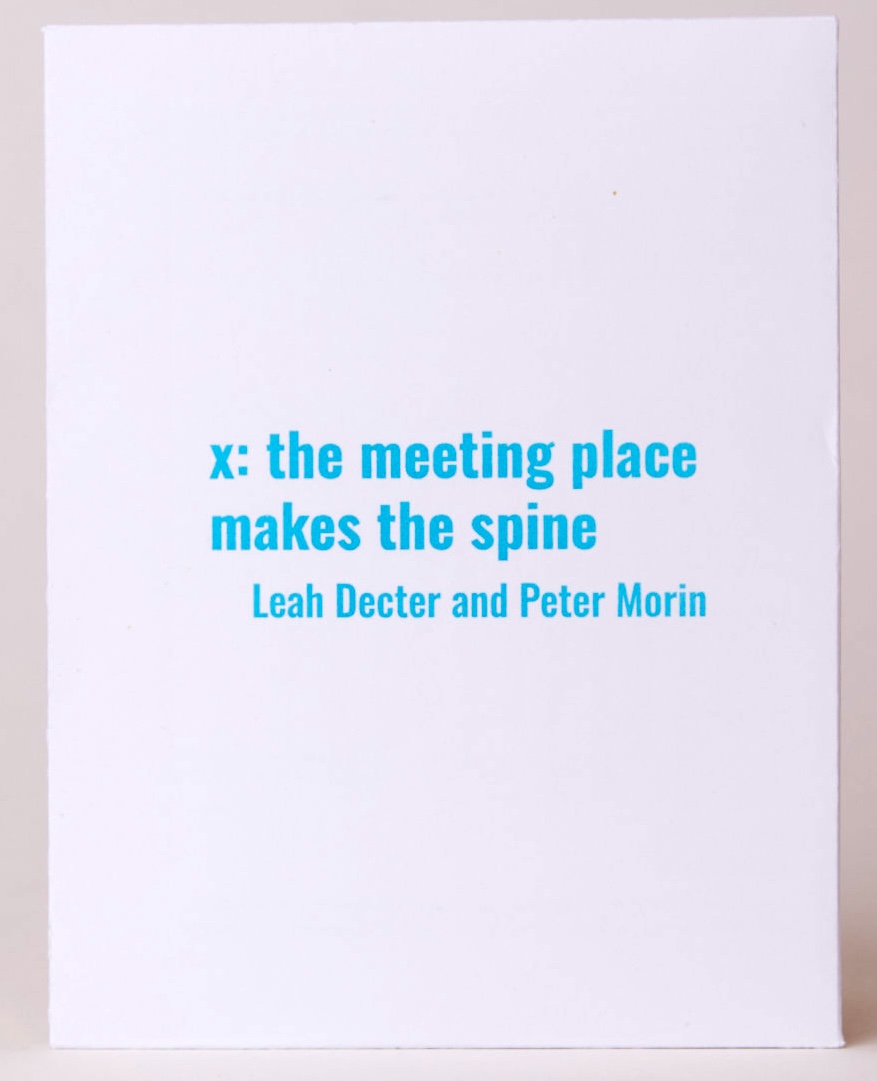
Title: x: the meeting place makes the spine
Authors: Peter Morin and Leah Decter
Series: Undercurrents and Flows
Host Artists (series editors): Lois Klassen and Deanne Achong
Designer: Aaniya Asrani and Emily Davidson
Book Binder: Ruby Lewis and others
Printer: Moniker Press (risograph on covers); MET Fine Printers Inc. (pages)
Date: 2024
Pages: 48 pages
Language: English
Envelope Dimensions: 4.25″ (106 mm) x 5.5″ (141 mm) x .13″ (4 mm)
Binding: Double accordion booklets are linked in an “X” formation by stitched covers; presented in a coloured envelope with sticker closure
Edition: 225
ISBN: 978-1-988895-34-5
Copyright : Attribution-NonCommercial-NoDerivatives 4.0 International (CC BY-NC-ND 4.0 ) License). Content copyrights remain with listed contributors.
Print copies are freely available through mail art exchanges, in person exchanges, and at cost to public institutions or mutual aid organizations. Contact lightfactorypublications@gmail.com for more information.
When opened, this multi-part accordion book produces an X that echoes the spaces where Indigenous sovereignties intersect with the necessary activation of settler responsibilities in relation to place. It results from an ongoing collaborative relationship between artist-scholars Peter Morin (Tahltan Nation/French-Canadian ancestry) and Leah Decter (Ashkenazi Jewish white settler). The book is a record of virtual performances in which Peter reads Tahltan stories translated by white anthropologist James Teit, while Leah draws Tahltan territory from Peter’s family photos.
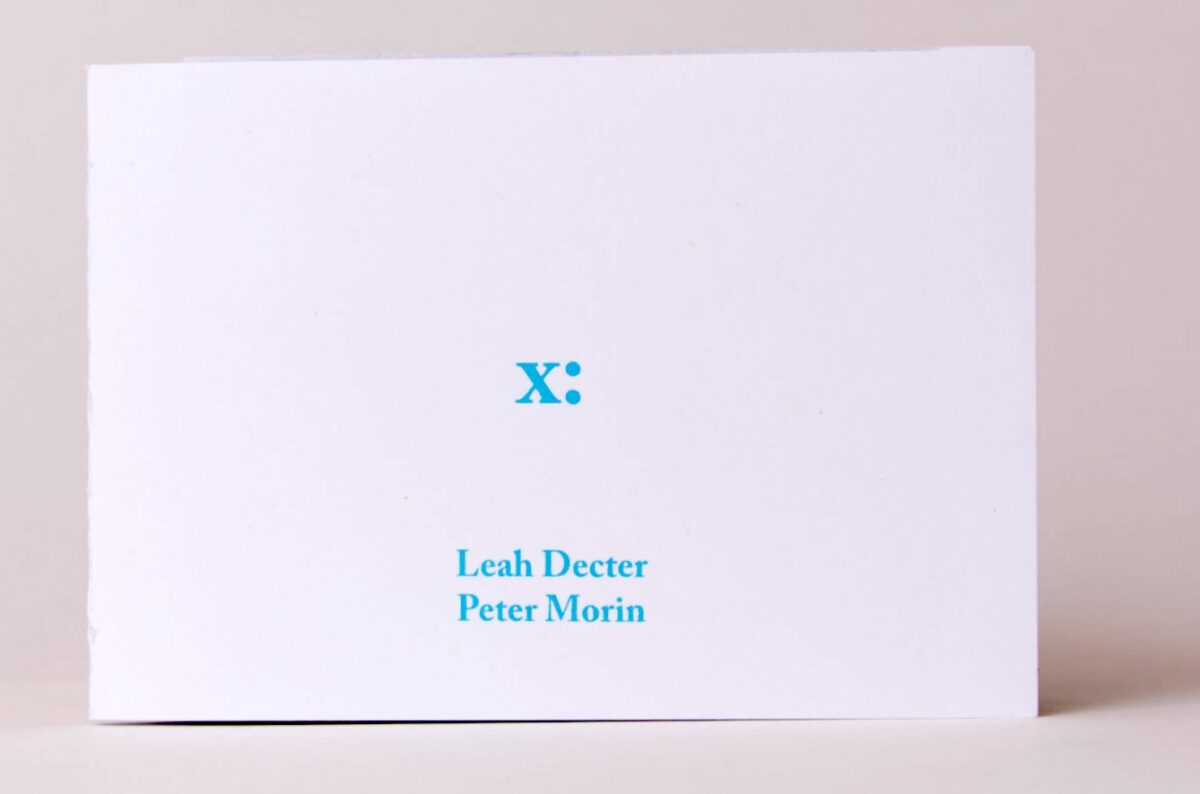

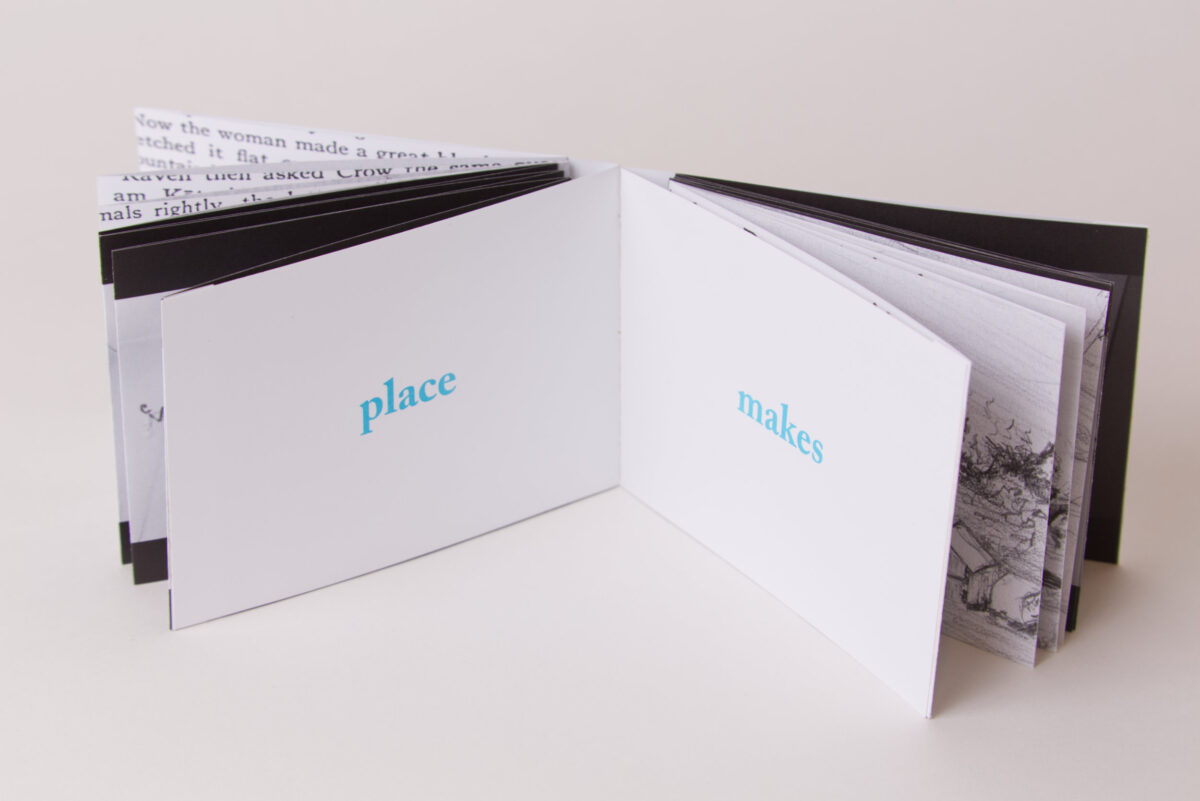

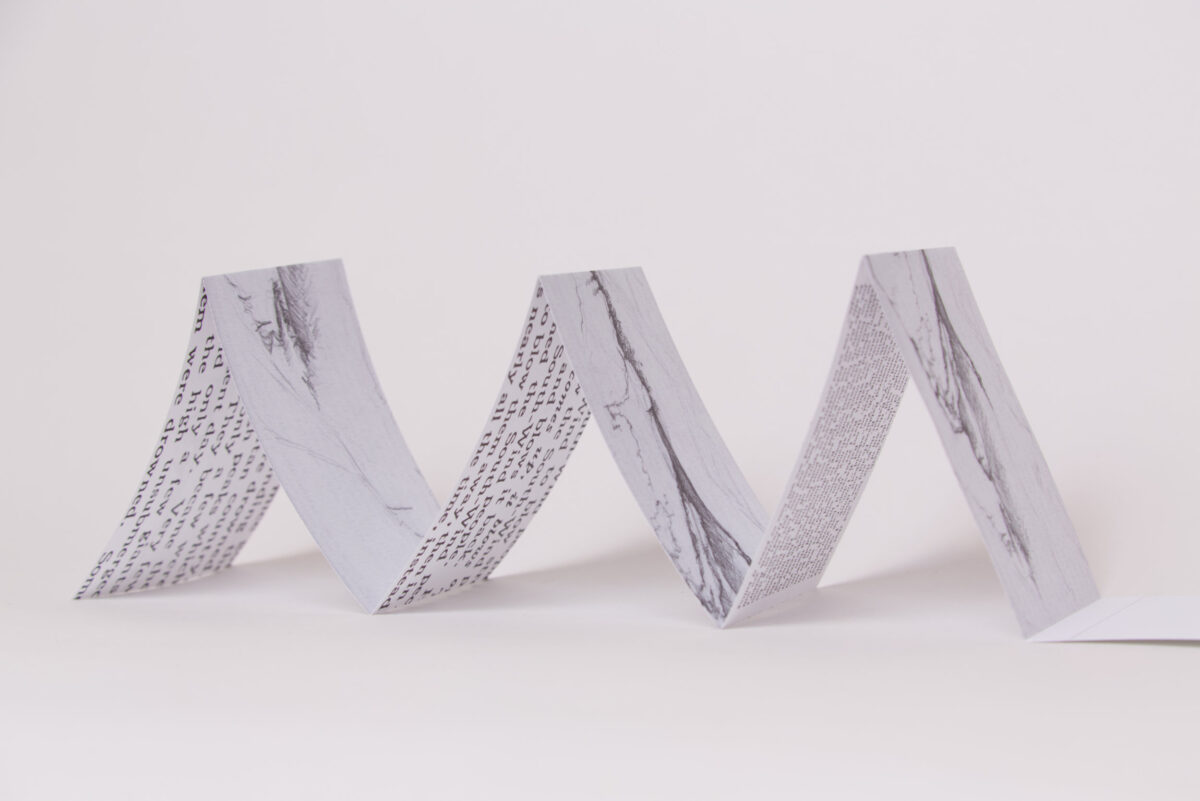
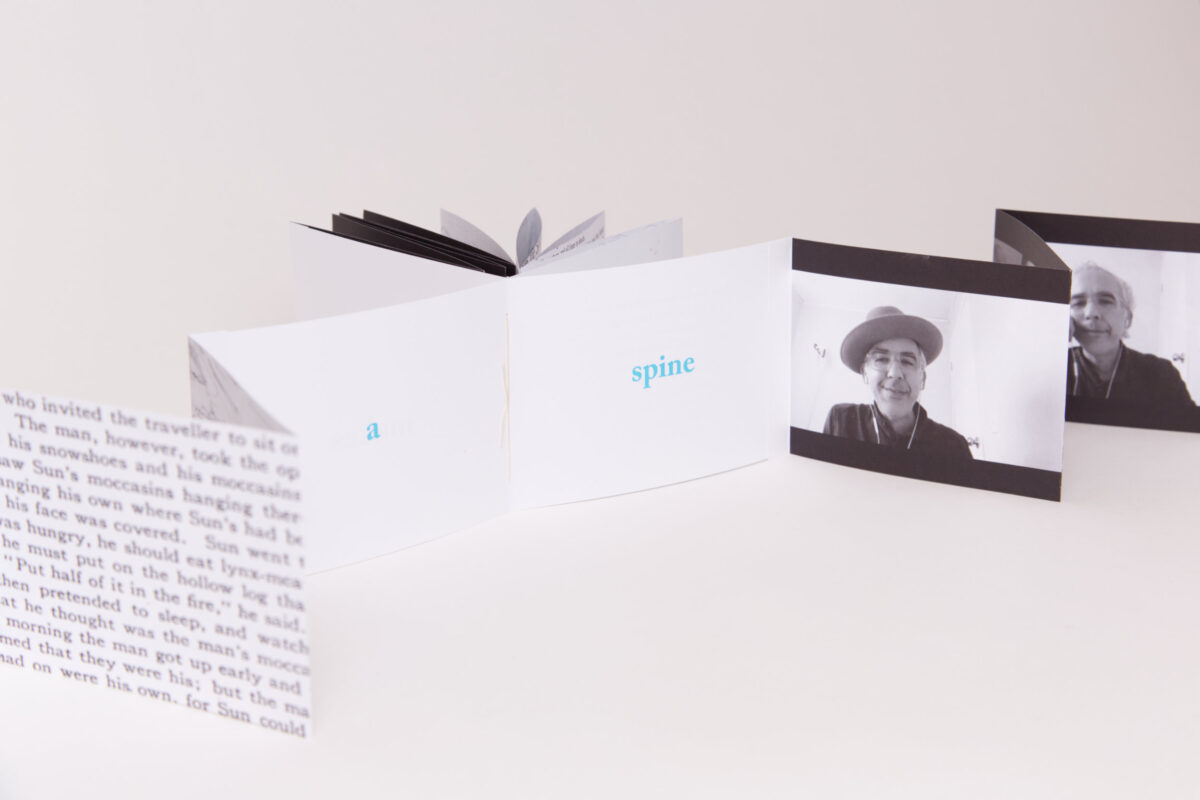
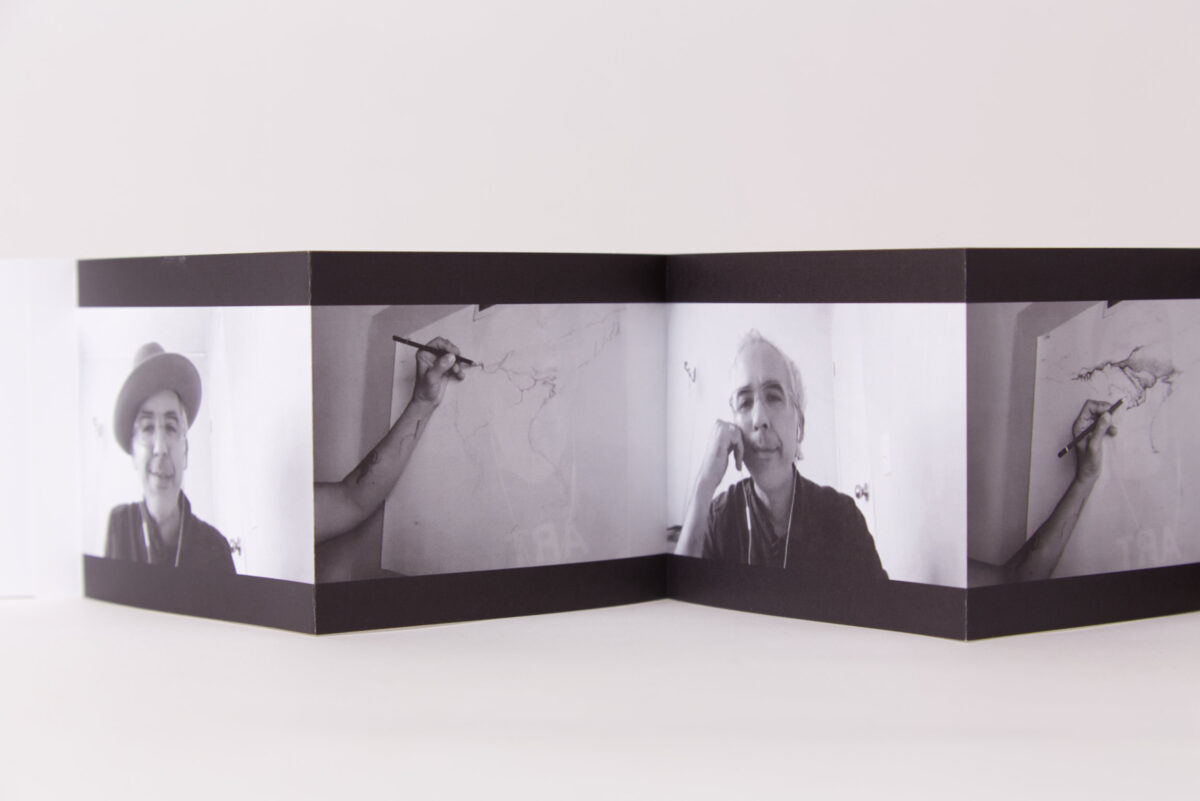
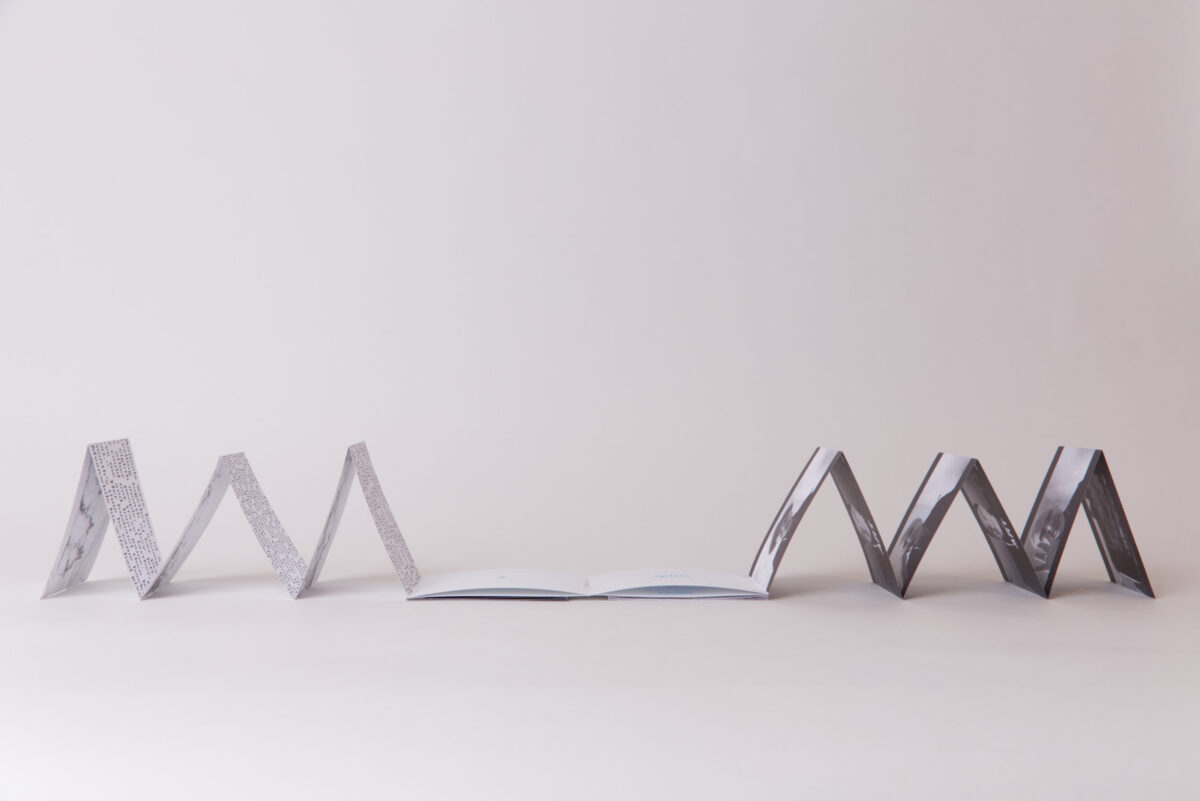
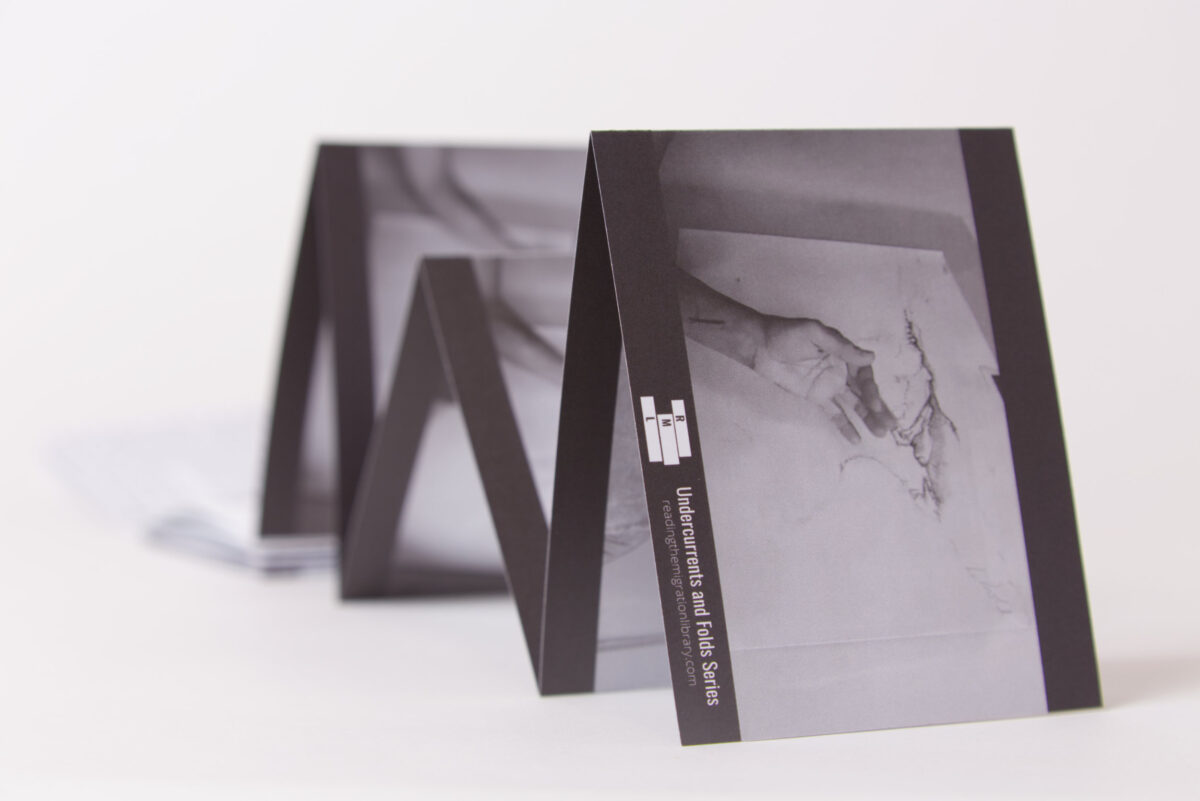
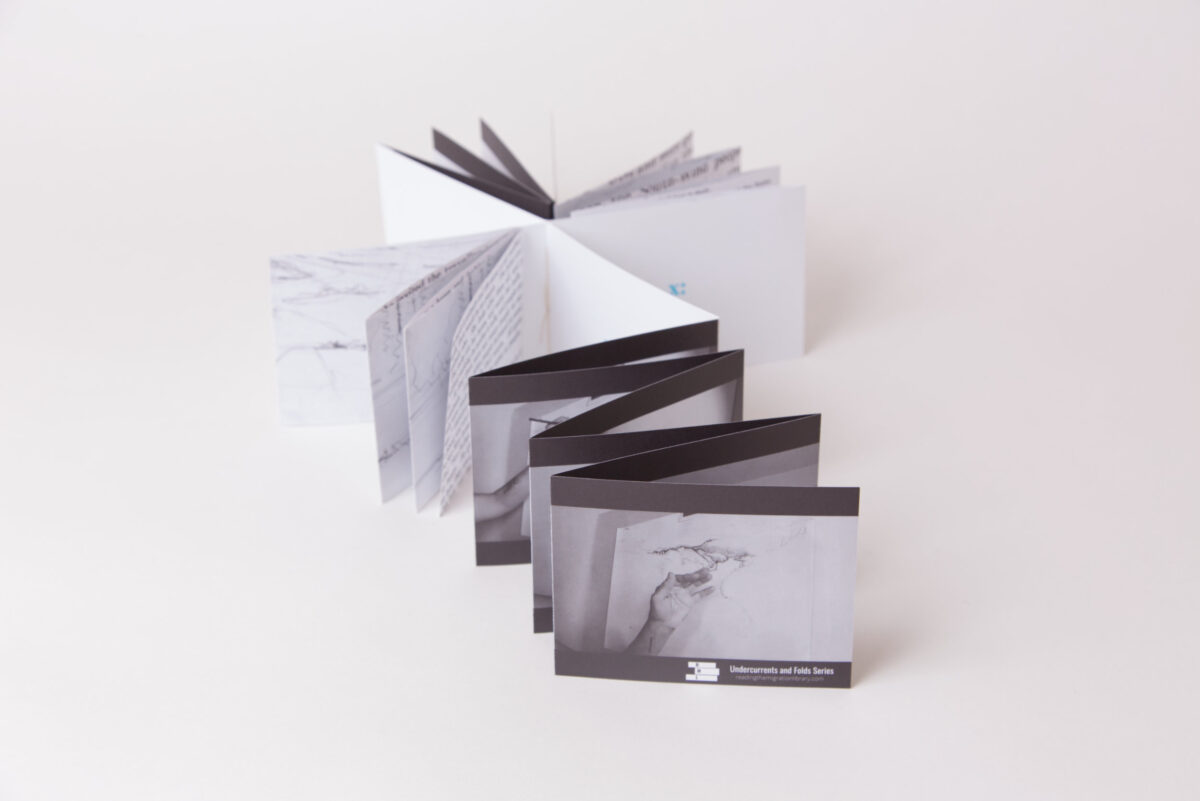
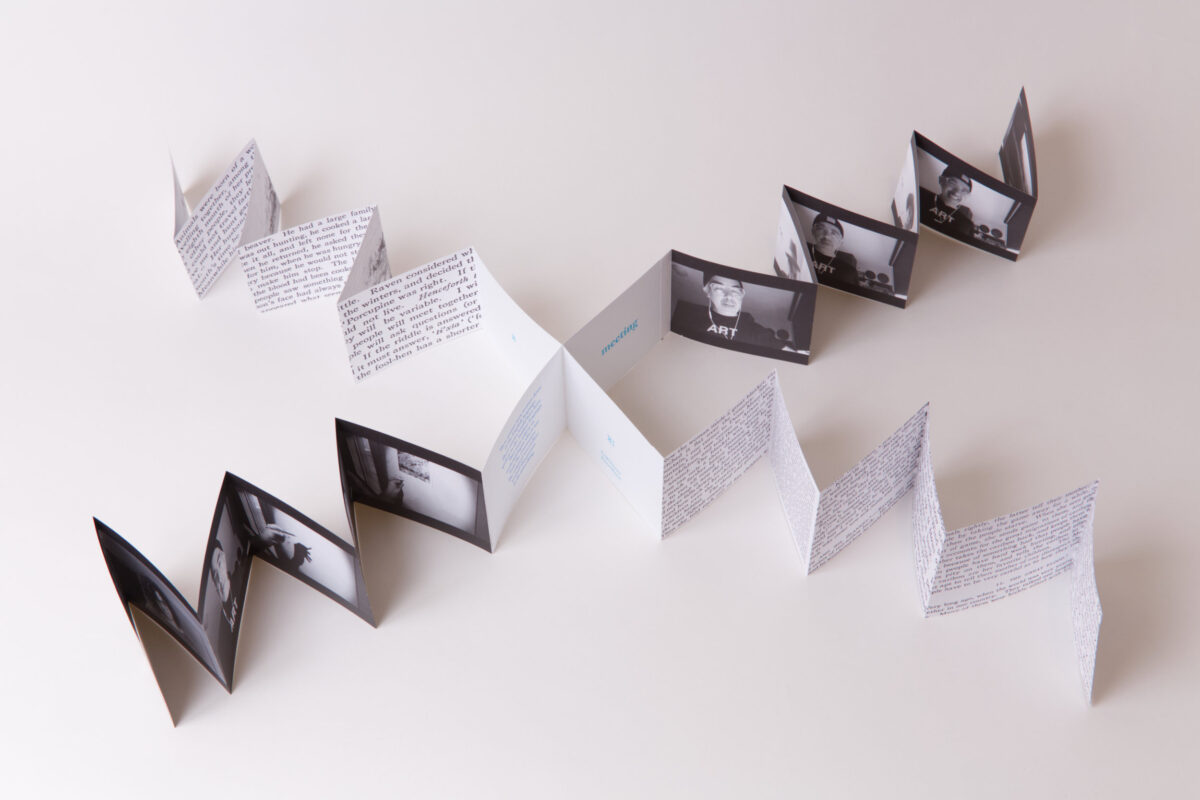
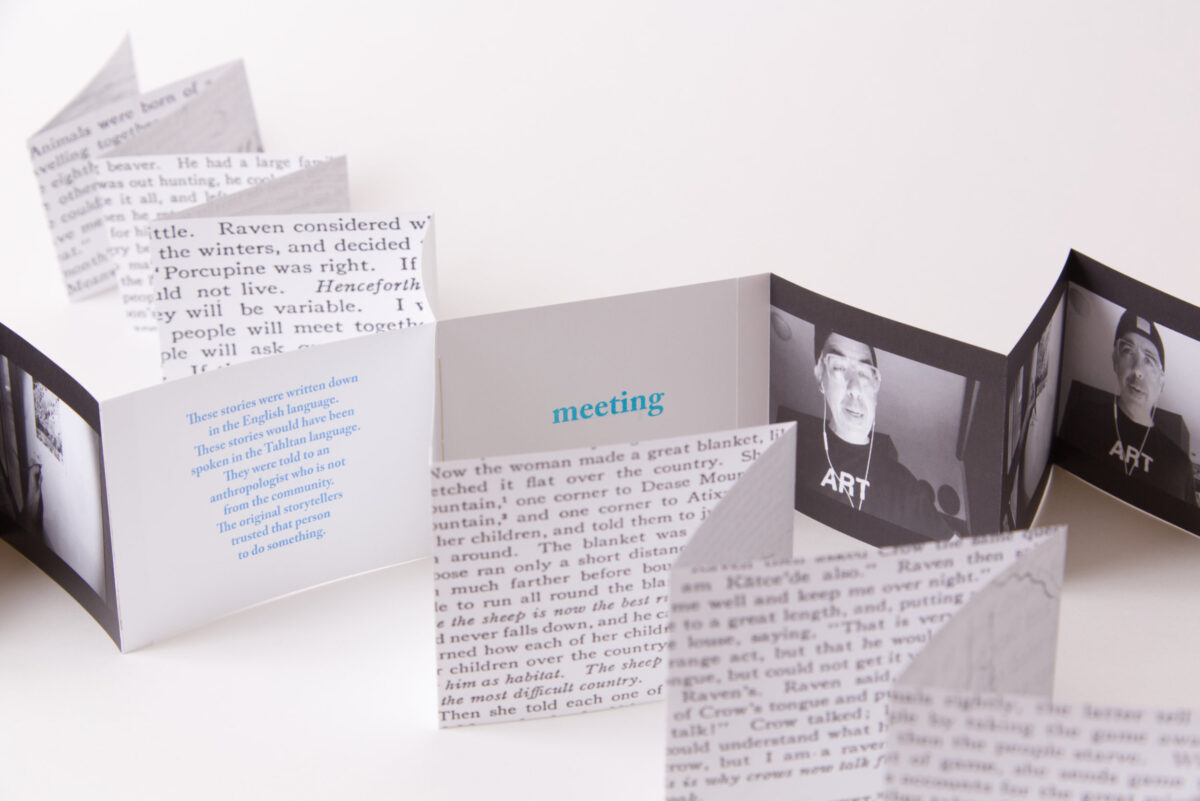
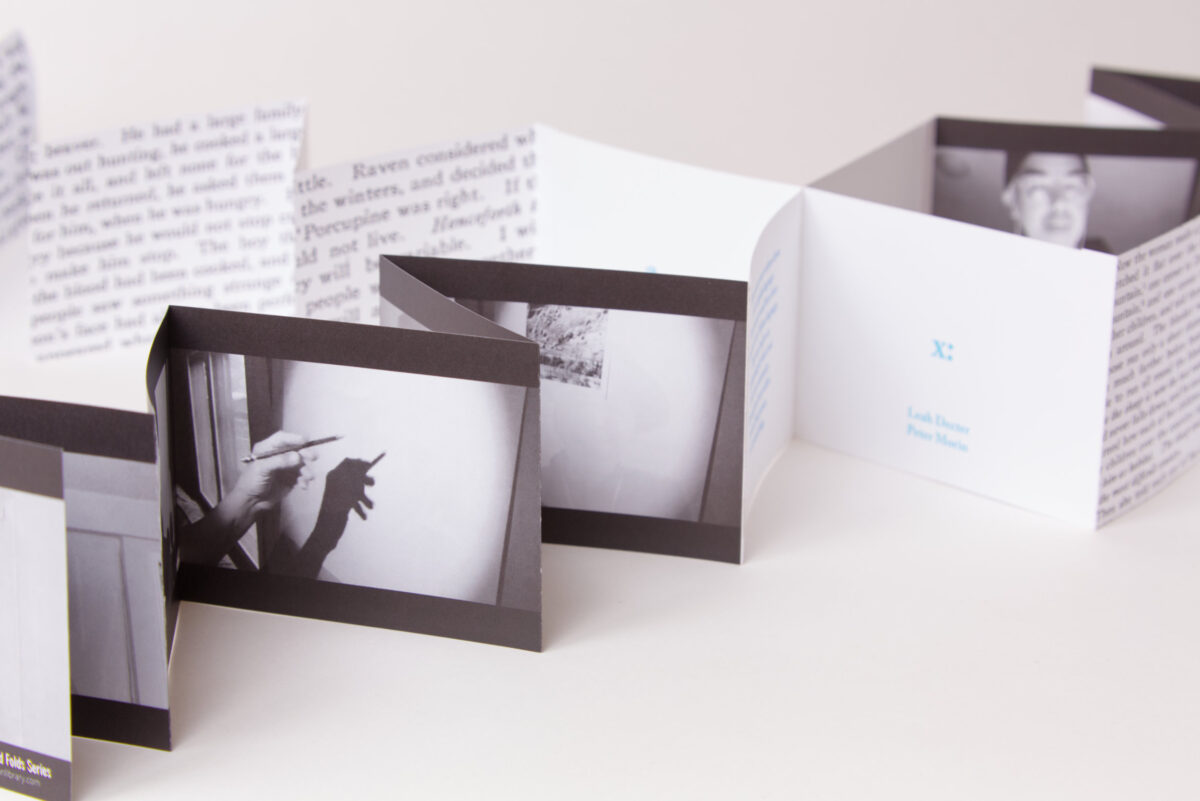


The artists acknowledge the support of Canada’s Social Sciences and Humanities Research Council and Canada Research Chair Program, as well as the Manitoba Arts Council that contributed to the making of this publication.
This publication would not have been possible without funding and support from BC Arts Council (Individual Arts Award); Canada Council for the Arts (Research Creation, Explore and Create grant); SSHRC Postdoctoral Fellowship at Critical Media Art Studio (CMAS), School of Interactive Art and Technology, SFU; Centre for Inter-Media Arts and Decolonial Expression (CIMADE), NSCAD and Canada Research Chairs Program; and, Manitoba Arts Council.
